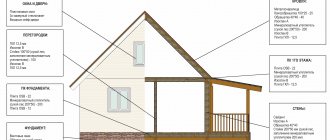Market value of land
Despite the fact that most people understand perfectly well what the market value of a land plot is, we consider it necessary to explain this concept in detail.
The market value of a plot of land is nothing more than its most likely price when sold on the open market under real competition.
The market value of a land plot can be negotiated between the seller and the buyer, or it can be established by a realtor or an independent appraiser (it all depends on the situation). The formation of market value is carried out individually and may sometimes include not the most obvious factors, such as: the view of the field (if it is cultivated, you can imagine the amount of fertilizers for processing it), nice and vigilant neighbors (who, for the faint sound of music with your site, they will call a riot police squad) and the lack of normal transport accessibility (but what silence it is). Therefore, the market price set by the seller (without the involvement of specialized specialists) is a relative value and sometimes extremely biased, but that’s why it’s a market, because for every product there is a merchant and there will be a deal. At the same time, it is worth remembering that the tax on the sale of a land plot will be levied on the transaction amount, i.e. the value specified in the contract, but if it is less than the cadastral value, the tax will be calculated according to the latter.
The best way to calculate the cadastral value of a land plot and what is it?
To solve your problem RIGHT NOW get
free consultation:
Show content
Who determines the cadastral value of a land plot?
On the basis of an administrative order, an authorized commission is created and approved, which is responsible for conducting audits in the area chosen by the administration. The commission includes licensed appraisers appointed by regional authorities. This includes independent entrepreneurs conducting commercial activities assessing the value of land (cadastral valuation).
When conducting land revaluation, auditors and appraisers rely on the current legislative standards established by Federal Law No. 135-FZ of July 29, 1998, which regulates the standards of appraisal activities, mainly set out in Article 24.15 of the Law.
About
Cadastral value of a land plot, what is it?
So what is this, the cadastral value of a land plot?
In legislation, cadastral value is defined as the value of a property, calculated and established as a result of a state cadastral valuation.
A reasonable question arises: what is a state cadastral valuation and why is it carried out? From the name alone it becomes clear that the cadastral valuation of real estate is carried out by the state, but by whom exactly? The hierarchy for determining the cadastral value is as follows: So the decision to conduct a state cadastral valuation is made by the authorized body of the subject of the Russian Federation (for example, in the Moscow region this is the Ministry of Property of the subject). After which Rosreestr generates lists of objects subject to state cadastral valuation and transfers them to the state budgetary institution (hereinafter referred to as the “GBU”) under the executive body of state power of the constituent entity of the Russian Federation. It is the State Budgetary Institution that makes all the necessary calculations to determine the cadastral value of real estate. The results of the calculations are sent by the State Budgetary Institution to Rosreestr for verification, after which they are approved by the executive body of state power of the constituent entity of the Russian Federation. The purposes of determining the cadastral value of real estate are: taxation, formation of rental rates, determination of state duties in case of inheritance or transaction, as well as calculation of the value when purchasing an object from the state, etc.
Who determines the cadastral value of a land plot?
We found out who will soon be obliged to determine the cadastral value. But how can you do it yourself if you can’t turn to specialists or have doubts about its real value?
In practice there are three ways:
- Costly - assessment of the cost of the site;
- Profitable - an assessment taking into account the income received and estimated future profit. The method is relevant for entrepreneurs.
- Comparative - take an area similar in size and purpose and compare it with the one being assessed.
In practice, all methods are often combined for accurate assessment. Sometimes a situation arises when a plot fits different categories of land. The highest cost type is selected for calculation.
Ultimately, the cost of one square meter is calculated.
meters. It is then multiplied by the total area of the land. Interestingly, the cadastral value cannot be higher than the market value in order to avoid artificially inflating prices.
In addition, other factors affect the cost. For example, infrastructure development, availability of communications (electricity, water, gas), distance from the center of the settlement, etc.
ATTENTION! A land plot without a cadastral passport cannot be correctly assessed. The results will be considered invalid in any case.
After the necessary calculations, the site is assigned a serial number and category, and it is marked on the map, including water bodies, forests, etc. An act is drawn up and sent to Rosreestr.
It is better to entrust the determination of the cadastral value of a land plot to a professional. His actions:
- A specific task is set and definition standards are determined.
- The site is checked for all kinds of restrictions and alienation.
- The specialist assesses in detail the position of objects, their number, taking into account communications and infrastructure.
- The appraiser analyzes additional factors. For example, the situation in the real estate market.
- The customer is provided with a full report in written and/or electronic form.
Of course, they resort to the services of professionals in controversial issues. For example, when the price is clearly too low. Despite a clear set of rules, there is no final form for assessing cadastral value. Campaigns are focused on a number of requirements:
- the presence of an intermediate and, of course, result understandable to the customer;
- Vague definitions and ambiguous results are not tolerated;
- all technical and special terms must be explained in a language understandable to the common man.
A final report is generated, which is approved by independent authorities. If there are gross errors or distortions of facts, the owner has the right to apply to the court for a recount. Let us remind you that information on cadastral value is public and available on the Rosreestr website. The owner can personally contact the organization and receive an extract within 5 working days.
To independently determine on the Internet, you should know a number of search parameters: plot number, land status, area, etc. All information can be found in the cadastral passport. If it is lost and there is no time to restore it, then to obtain information you should give the exact address of the site, starting with the district and ending with the letter (if available).
Having the necessary information, you can open the Rosreestr website and simply enlarge the map of the area. The village, the street and the desired house are quickly located.
What does the cadastral value of a land plot consist of and how is it formed?
The first thing that is worth noting when considering the topic of forming the cadastral value of land plots is that to calculate it, as a rule, the method of mass valuation is used and only occasionally (when otherwise is impossible) individual valuation. With this valuation approach, real estate objects are divided into groups according to similar features and characteristics. A single valuation model is selected for a group of similar objects. Thus, land plots are divided into groups depending on the intended purpose (category of land), type of permitted use and activity. The cadastral value of a land plot is made up of the following factors and quantities:
- provision of the site with engineering infrastructure. A site is considered to be provided with engineering infrastructure if communications are connected to its border and their operation is possible. In this case, the cadastral value includes the cost of connection. If it is impossible to use communications without an additional connection, the site is not considered to be utility-supported;
- provision of the site with transport infrastructure. This takes into account the type, classes and categories of access roads;
- provision of the site with social infrastructure;
- characteristics of nearby territories (degree of their development);
- relief of the land plot (if its availability affects the cost);
- restriction of land rights (including the establishment of zones with special conditions of use);
- regional economics, ecology, etc.
A more detailed list of price-forming factors for a land plot can be found in the guidelines approved by Order of the Ministry of Economic Development dated May 12, 2017 No. 226. Also, when calculating the cadastral value of a land plot, the appraiser (GBU employee) can enter various coefficients, but this action must be justified.
Calculation of the cadastral value of a land plot
The cadastral value of a plot of land is a significant indicator that appears in various land transactions. It is worth finding out how it can be calculated and on what factors it depends.
How is the cadastral value of a land plot calculated?
The cadastral value of a plot of land is understood as the equivalent price of such a plot. This value is used primarily when taxing land, as well as for calculating rent and buying and selling plots.
However, in the latter case it is used quite rarely. The main task, the solution of which the cadastral value contributes to, is determining the amount of tax. This largely contributes to the overestimation of this indicator by civil servants. Consequently, the market price of a land plot differs from the cadastral value data.
The calculation is carried out according to the following formula:
Puz × (Рп+Рс) × K
For the most complete understanding, it is advisable to explain each symbol that is used in this formula, since not everyone has such knowledge:
- Poz is the area of a land plot; square meters are used to measure it;
- Рп – livability of a settlement, which is a linear function, expressed in rubles/sq.m;
- Рс – function of the transaction format, expressed in rubles/sq.m;
- K – transition coefficient.
No matter how much information you have on this issue, it is better to contact a qualified specialist in this field to carry out the entire calculation procedure correctly and accurately. This is especially true for situations where the cadastral value plays a key role and is needed for subsequent serious actions.
You can recalculate, but this is only possible after 5 years from the date of calculation. Therefore, it is advisable to obtain correct information without errors.
In the age of information technology, the process of calculating cadastral value is greatly simplified. There are ways to make payments online, which can save time. To do this, visit the Rosreestr website and open the tab called “Public cadastral map”. However, before doing this, be sure to register.
Next, enter the cadastral number or use the search by locality.
This will help you find the cadastral value of your site.
After this, open the tab called “Thematic Map” and fill in the blanks in the appropriate pricing boxes.
The process of assessing cadastral value is characterized by the presence of successive stages. This process is carried out once every 5 years.
The process consists of the following steps:
- Decision-making;
- A list of areas that will be assessed is compiled;
- The appraiser organization with which the corresponding agreement will be concluded is selected;
- Conducting an assessment, calculating the cost, preparing a report;
- Examination of the report;
- Data approval after expert confirmation;
- Entering the information received into the register and making it public.
The Ministry of Economic Development of the Russian Federation establishes certain requirements for state assessment, since the process is complex and lengthy. Before starting the work of the expert commission, inform the dates and deadlines for the work.
The issue of cadastral value of land plots requires a professional approach, especially in situations where large plots of land are involved. But what factors depend on the cadastral value? An answer to such a question can only be obtained after a thorough analysis of documents and inspection of the site.
Be sure to consider the following factors:
- Number of plots in one territory (for information, contact the cadastral service in your region);
- The amount of time spent by specialists on the assessment;
- Data on the size of the plot;
- Site category;
- How is the site located on the map?
All information received is included in the report, and it must be presented in two forms: graphic and digital. This will help avoid problems with data loss due to technical problems.
The cadastral value serves as a guide for determining the relevance of prices for plots. Usually the market price exceeds it, but may be equal to it. If suddenly the price turns out to be lower than the cadastral value, it is worth changing the price or identifying errors in the calculations.
If you think that the cost of the plot is overestimated or underestimated, and the documents from Rosreestr contain errors, send a request for a new inspection and dispute the incorrect data.
Recalculation of the value of a land plot can be carried out through judicial and administrative procedures.
If you have chosen the administrative procedure, make a written application and submit it to the commission, which was formed by Rosreestr and deals with disputes of this kind.
Be sure to attach to your request documents confirming the presence of cost errors, as well as the relevant certificate, passport and documents confirming the right to the land plot. The request will be reviewed within 30 days, and then you will receive written notification of the decision made in your case.
To appeal the commission’s decision or go directly to court, file an administrative claim. A sample of this claim can be found on the website.
To find out the exact list of documents required to be submitted along with the application, contact persons working in the judicial authorities, since depending on the grounds on which the claim is filed, the list may change.
A period of 60 days is allotted for consideration of a request for revision of the cadastral value, and a period of 1 month is allotted for challenging the acts of the commission.
Source: https://UrOpora.ru/zemlya/raschet-kadastrovoj-stoimosti-zemelnogo-uchastka-2.html
The difference between the cadastral value of a land plot and the market price
As you may have noticed, when calculating the cadastral value of a land plot, the degree of its improvement and improvement is not taken into account, which is a marker of the fundamental difference between the cadastral value of a land plot and the market value. The argumentation of this fact smoothly flows into an explanation of the reason for this differentiation. The main and main difference between the cadastral value of a land plot and the market value lies in the scope of their application: the cadastral value is used for taxation, and the market value for carrying out a transaction. It immediately becomes clear why no “decoration” is involved in the formation of the cadastral value of a land plot, because paying a tax for a “scenic view” is not very logical. But the differences between the cadastral value of a land plot and the market price are not limited to this: the market value is influenced by the exchange rate, demand, seasonality, etc., while the state cadastral valuation is more focused on the regional economy. Also, do not forget about the performers: the cadastral value of a land plot is calculated by an appraiser - an employee of the State Budgetary Institution at the request of the state, and the market value is calculated on a commercial basis by an independent appraiser (if there is an SRO), at the request of any interested party. We recommend that you take into account one very strict rule:
Under no circumstances should the cadastral value of a land plot exceed its market price, since this is a direct violation of current legislation.
If such a situation arises, you can legally challenge the cadastral value of a land plot, thereby reducing the amount of land tax paid (read our article on how to challenge the cadastral value). You can check the cadastral value of your plot by its cadastral number, and there are several ways to do this, which can be found in our article: “How to find out the cadastral value by cadastral number.”
The procedure for determining the cadastral value of a land plot
Based on the land legislation of the Russian Federation, state land assessment must be carried out at least once in the interval from three to five years.
Who carries out the state assessment of land and analyzes the results?
In every region of our country there is one very important government agency called the Office of the Federal Service for State Registration, Cadastre and Cartography (Rosreestr).
First, regional representatives of the service compile a list of land plots subject to state assessment in your region.
Then they enter into contracts for the procedure for determining cadastral value with companies specializing in this type of activity.
The activities of such legal entities are controlled by a special law “On Valuation Activities”.
This legal act establishes:
- The procedure for conducting assessment activities;
- List of indicators by which the assessment is carried out;
- The procedure for submitting reports to Rosreestr;
- Responsibility of appraisers for violation of the law.
When determining the cadastral value of any of the plots, the company conducting the assessment is guided by the following indicators:
- Location of the land plot;
- Land area;
- Type of use (how exactly the site is used);
- The purposes for which the land is used (intended purpose).
Based on the results of the above activities, the appraiser company submits a report to Rosreestr, which is generated according to a specific sample. Next, all information is approved and transferred to local authorities.
How to obtain a certificate of cadastral value of a land plot?
Read about reducing the cadastral value of a land plot here.
How to challenge the cadastral value of land, read the link:
Territorial division of settlements
If you take any populated area and look at it from the point of view of a cadastral engineer, you can see that its entire territory is divided into administrative-territorial districts (usually there are several of them).
The districts, in turn, are divided into cadastral districts. The smallest unit of division is square meters. By the way, cadastral blocks can be seen with your own eyes on the cadastral map when determining the state price of a land plot via the Internet.
How to determine the state (cadastral) value of land?
In order to determine how much your plot was valued by the state, you need to find out the specific cost indicator.
It is assigned to each of all types of land use within one cadastral block (there are 17 such types in total).
Next, take the area of the plot and multiply it by the above-mentioned specific indicator. And now, you already know the cadastral value of your land.
But when making such calculations, an important point must be taken into account: if the land plot is intended for several types of use, then the specific indicator with the largest value is taken from all types.
There are two main points on which the result of the state land assessment directly depends:
- Type of land use (one plot may have several types of use);
- A specific indicator of the state value of land, which is determined in direct proportion to its use.
The specific procedure for assessing land plots is enshrined in Decree of the Government of the Russian Federation of April 8, 2000 N 316 “On approval of the Rules for conducting state cadastral assessment of land.”
Having analyzed this legal act, we can identify several successive stages of conducting a cadastral valuation and entering its results into a special register:
| Stages of state assessment of land plots | Specifics of the stage |
| Submission by the land owner of an application to register the land with the state. Consideration of this application in Rosreestr | Verifying the authenticity of documents and information in them. Making a decision on the need to assess the state value in order to include the site in the unified Rosreestr database |
| Rosreestr employees compile a list of plots for which it is necessary to determine the cadastral value | This list contains general information about each site that will be assessed. Next, in order of priority, the cadastral value is calculated |
| State assessment of the value of each of the land plots that were included in the list | A special assessment commission is formed, which assesses the value of the site based on a number of indicators |
| Obtaining cadastral valuation results and entering data into a special database | After data about the plot and its cadastral value are entered into the Rosreestr database, it is considered that the land is registered with the state. After going through all these procedures, the owner will finally be able to receive title documents for his land plot |
The cadastral value of a plot is a rather unstable indicator and can change over time, so experts advise monitoring ongoing changes and carrying out a state assessment of the land within the time limits recommended at the legislative level.








